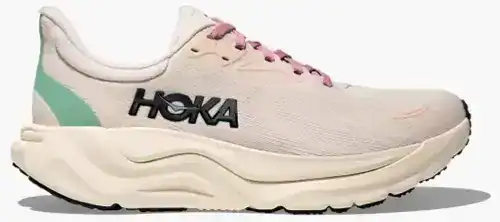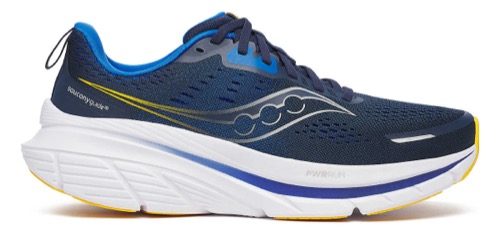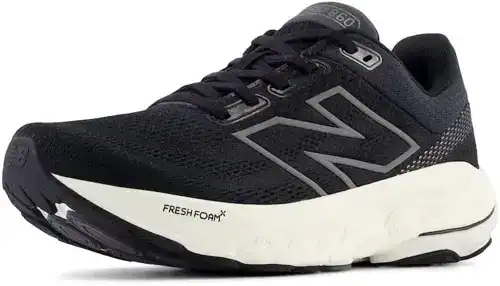Last Updated on July 16, 2025
Best Shoes for Ankle Support
As a guy in his 50s who’s been running since high school, I’ve had my share of ankle tweaks and strains. When you’ve clocked thousands of miles, you learn that cushioning alone isn’t enough—you need structure, heel stability, and motion control. Whether you’re battling ankle pain, recovering from injury, or just want more stability, the 2025 lineup delivers. These shoes are my top picks for supporting weak ankles on both the road and everyday walks.
Summary of Best Shoes for Ankle Support
Shoe Model | Gender | Best for | Topic Features | Price |
|---|---|---|---|---|
Long road runs, overpronators | 4D Guidance system, PureGEL, FF Blast+, heel lockdown | |||
Everyday runs with ankle instability | H-Frame stability, responsive ride, early-stage rocker | |||
Max-cushioned ankle support | Broad base, J-Frame+ tech, plusher than Arahi | |||
Walking, gym, light running | CenterPath tech, wide platform, flexible forefoot | |||
Daily training with mild pronation | Fresh Foam X, dual-density post, engineered heel flare |
In-depth Reviews of Best Shoes For Ankle Support
ASICS Gel-Kayano 32
Best for: Long road runs, overpronators

The ASICS Gel-Kayano 32 is the latest iteration of one of the most trusted stability shoes ever made. With this version, ASICS introduces its advanced 4D Guidance System, designed to adapt to movement in real-time for smoother transitions and more ankle control—especially useful if you suffer from weak ankles or are prone to inward rolling (overpronation).
It features PureGEL in the rearfoot for shock absorption and FF Blast Plus Eco foam for a springy, lightweight ride. What runners and walkers will love most is the deeper heel cup and broader base, which helps with lateral ankle support. The new engineered knit upper hugs the midfoot without pressure, allowing a stable and locked-in feel for long runs or all-day wear.
Specs
- Weight: ~10.5 oz (Men), ~9.2 oz (Women)
- Midsole: FF Blast+ Eco
- Stability tech: 4D Guidance™, PureGEL™ heel insert
- Helps with: Ankle pain, overpronation, weak ankles
Pros
- Noticeably stable under high mileage
- Heel clip and wider base improve ankle control
- Eco-friendly foam without sacrificing bounce
Cons
- Higher price tag than average
- Toe box may feel snug for wide-footed users
Buy: Men’s version | Women’s version
HOKA Arahi 8
Best for: Everyday runs with ankle instability

The HOKA Arahi 8 is a standout in the stability category for runners who need ankle support without the usual bulk. This 2025 release refines the brand’s lightweight stability design, adding small but smart tweaks for more ankle control and everyday comfort.
Central to the Arahi 8 is its J-Frame and H-Frame midsole geometry, which subtly guides your stride without rigid corrections. The soft EVA foam gives it a lighter and more responsive feel than many traditional support shoes. For those with weak ankles or early-stage pronation, this design can help realign your gait without feeling overbearing.
The upper sees improvements too: the ankle collar is more padded, and the engineered mesh locks in the midfoot for a stable ride. The early-stage Meta-Rocker also helps reduce the chance of foot slap and improves gait smoothness. It’s a shoe that works for light runners, gym cross-training, or recovery walks when you need comfort and stability in one.
If you’re looking for a sleek, supportive option that blends performance with comfort, the Arahi 8 is an excellent daily trainer.
Specs
- Weight: ~9.9 oz (Men), ~8.5 oz (Women)
- Stability tech: H-Frame™, J-Frame™, Early Meta-Rocker
- Cushioning: EVA-based foam
- Helps with: Weak ankles, mild pronation, daily comfort
Pros
- Lightweight yet supportive for everyday use
- Ankle collar is padded and secure
- Doesn’t feel bulky despite wide base
Cons
- Cushion is firm, not plush
- May not suit high-arched runners
See also: Hoka Arahi 8 review
Buy: Men’s version | Women’s version
HOKA Gaviota 5
Best for: Max-cushioned ankle support

The HOKA Gaviota 5 has emerged as one of the most supportive and protective shoes in HOKA’s 2025 lineup—perfect for those with ankle pain or weak ankles. With its ultra-plush midsole, broad platform, and softly reinforced medial structure, this shoe offers a luxurious and stable ride for everyday runners and walkers who want both comfort and support.
The shoe utilizes a wide base combined with H-Frame technology to provide a guided, stable stride. It’s particularly helpful for those with overpronation issues or those recovering from injuries. The late-stage rocker geometry aids forward propulsion while limiting awkward ankle rolls. It delivers a very smooth ride, especially over long distances.
Its max-cushion EVA foam absorbs shock extremely well, while the new upper design enhances lockdown and support around the ankle. Compared to previous Gaviota models, version 5 feels more balanced underfoot—soft without sacrificing control.
Whether you’re walking on pavement, logging recovery miles, or spending long hours on your feet, the Gaviota 5 is a reliable choice to help reduce strain on your ankles and improve overall gait alignment.
Specs
- Weight: ~11.2 oz (Men), ~9.8 oz (Women)
- Cushioning: High-stack EVA
- Stability tech: H-Frame™, late-stage rocker
- Helps with: Ankle fatigue, weak ankles, long walk recovery
Pros
- Exceptionally cushioned and stable
- Roomy forefoot without feeling sloppy
- Low heel slippage, secure ankle wrap
Cons
- Heavy for speed work
- Expensive for casual users
Buy: Men’s version | Women’s version
Saucony Guide 18
Best for: Walking, gym, light running

The Saucony Guide 18 brings a fresh feel to a long-running favorite in the stability category. With a complete geometry redesign, it now caters even better to users dealing with mild ankle instability, early overpronation, or simply looking for a dependable daily trainer.
CenterPath Technology is the hallmark feature here—helping align the foot’s movement forward by using wide sidewalls and midsole shaping. The result is a shoe that feels natural to run or walk in, while still offering quiet guidance and control. Paired with PWRRUN foam, it delivers soft cushioning that doesn’t collapse under pressure, which is great for prolonged wear.
The heel has been broadened and reinforced, while the ankle collar feels more secure than in the Guide 17. It’s stable without being stiff, and flexible enough for gym classes, casual runs, or long days walking.
If you’re looking for a modern-feeling shoe that blends versatility with subtle ankle support, the Guide 18 is an excellent choice. It’s especially well-suited to those who want one shoe that can do a little bit of everything, while keeping your stride aligned and stable.
Specs
- Weight: ~9.7 oz (Men), ~8.4 oz (Women)
- Midsole: PWRRUN foam
- Stability tech: CenterPath™, flared heel geometry
- Helps with: Mild instability, early pronation, walking form
Pros
- More versatile than most stability trainers
- Wide base reduces ankle wobble
- Affordable compared to premium models
Cons
- Less firm heel counter than competitors
- Might feel soft for serious runners
Buy: Men’s version | Women’s version
New Balance 860v14
Best for: Daily training with mild pronation

New Balance continues to refine its dependable 860 series, and the 860v14 builds on everything runners and walkers appreciated about its predecessor. This model strikes a solid balance between comfort and control, making it a great daily trainer for those dealing with mild pronation or ankle instability.
The latest version features a redesigned Fresh Foam X midsole that offers slightly more cushion than the previous generation while maintaining a supportive, responsive ride. The dual-density medial post gives the midfoot added structure without making the shoe feel rigid. Where it truly shines is ankle stability—the heel counter is reinforced, the heel base is flared and grounded, and the entire rearfoot structure promotes a stable foot strike. The engineered mesh upper is both breathable and structured, holding the foot in place without irritation.
Whether you’re walking the city or training for a 5K, the 860v14 delivers the ankle support you need in a package that doesn’t compromise comfort. It’s a dependable, workhorse shoe for runners and active walkers alike.
Specs
- Weight: ~10.9 oz (Men), ~9.6 oz (Women)
- Cushioning: Fresh Foam X
- Stability tech: Medial post, flared heel geometry
- Helps with: Flat arches, weak ankles, ankle fatigue
Pros
- Firm and structured without feeling stiff
- Highly breathable mesh upper
- Durable outsole for urban walking
Cons
- A bit narrow in the forefoot
- Stiff out of the box (break-in needed)
Buy: Men’s version | Women’s version
Buyer’s Guide: Choosing the Best Shoes for Ankle Support
If you suffer from weak ankles, recurring sprains, or general instability when walking or running, choosing the right footwear is crucial. This guide walks you through the key features to consider when buying shoes for ankle support so you can confidently reduce your risk of injury and move with stability.
Understand Your Ankle Needs
Start by identifying the root cause of your ankle discomfort. Is it chronic instability, a recent injury, or a biomechanical issue like overpronation? Weak ankles can also result from poor muscle conditioning or improper footwear. Knowing whether you need high-structure motion control or light stability guidance will help narrow down your choices. A professional gait analysis from a running store or podiatrist can offer key insights into your alignment and support needs.
Stability vs. Motion Control
Stability shoes are designed for people with mild to moderate overpronation. They use supportive features like medial posts or sidewalls to gently guide your stride. Motion control shoes, on the other hand, are more rigid and built for those with severe overpronation or flat arches. They help prevent the ankle from rolling inward excessively and are ideal for individuals with chronic ankle instability or a history of ankle-related injuries.
Cushioning Level
Shoes that support the ankle also need to cushion the joints to minimize impact stress. A good midsole should offer plush cushioning that absorbs shock without being so soft that it destabilizes your footing. Technologies like Fresh Foam X (New Balance), PWRRUN (Saucony), and FF Blast+ (ASICS) provide a balance of comfort and control. For those with ankle issues, shoes with higher stack heights and stable base designs help distribute pressure more evenly through each stride.
Heel and Ankle Structure
The ankle collar and heel counter are key to keeping your ankle in place. Look for shoes with a snug heel fit and reinforced heel cups to prevent lateral movement. A higher, padded collar can provide extra support without rubbing or discomfort. These design features reduce the chance of ankle rolling, especially when walking on uneven terrain or running long distances.
Shoe Width and Fit
Ankle support starts with proper fit. Shoes that are too loose can lead to instability, while shoes that are too tight can interfere with circulation or natural gait. Look for models that offer wide, standard, and narrow width options to accommodate different foot shapes. The shoe should provide a secure lockdown at the midfoot and heel, with just enough room in the toe box for natural foot splay.
Daily Use or Specific Activity?
Consider when and where you’ll be using the shoes. If you’re walking or standing all day, choose a plush stability model like the HOKA Gaviota 5 for comfort and all-day support. If you’re a runner, you might benefit from a more responsive model like the Saucony Guide 18 or the ASICS Gel-Kayano 32. Those doing gym workouts or HIIT will want something lightweight with ankle-locking fit, like the HOKA Arahi 8.
Replace Worn Out Shoes
Over time, shoes lose their structure and cushioning—especially in the midsole and heel, both critical for ankle stability. As a general rule, replace running or walking shoes every 300–500 miles. Check for signs of wear like uneven tread, creased midsoles, or a loose heel. Continuing to use worn-out shoes increases your risk of rolling an ankle or developing chronic pain.